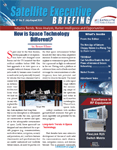ITU World Radiocommunication Conference (WRC-19) to Play Pivotal Role in Tomorrow’s Digital Environment
Geneva, Switzerland, October 8, 2019--The World Radiocommunication Conference 2019 (WRC-19) to be held at Sharm el-Sheikh, Egypt, from 28 October – 22 November 2019, will address requirements for some of the leading edge technological innovations set to play a pivotal role in tomorrow's digital economy with immense implications for the trillion-dollar telecommunication and ICT industry. It will be preceded by the Radiocommunication Assembly 2019 (RA-19), 21 – 25 October 2019.
The World Radiocommunication Conference, held every three to four years, is mandated to review and revise the Radio Regulations, the international treaty governing the use of radio-frequency spectrum and satellite orbits. WRC-19 will facilitate the management of scarce orbit/spectrum resources in the interest of end-users, with global implications for both policy-makers and the industry.
Radiocommunication Assemblies (RA) are responsible for the structure, programme, and working methods for the development and approval of radiocommunication-related Recommendations, Reports and Handbooks. They normally convene every three or four years and precede World Radiocommunication Conferences (WRCs).
Over 3500 participants from 193 ITU Member States along with 267 members of the ITU Radiocommunication Sector (ITU-R) representing international organizations, equipment manufacturers, network operators and industry forums who attend as observers.
Unlocking human potential with technology of the future
The World Radiocommunication Conference will facilitate new innovations in mobile technology, identifying additional frequency bands for the future development of International Mobile Telecommunications (IMT) and further enabling the rollout of IMT-2020 networks, otherwise known as 5G.
Among a host of other items on the agenda, the conference will:
- Update and modernize the Global Maritime Distress and Safety System (GMDSS) and expand geographical coverage, including in Polar regions.
- Ensure that Earth exploration and meteorological-satellite systems continue to provide environmental monitoring, prediction and mitigation of the negative effects caused by climate change as well as monitor the earth's resources.
- Consider additional frequencies for earth stations in motion (ESIM) communicating from aircraft, maritime vessels and land vehicles with satellites on the geostationary orbit (GSO).
- Enhance the international regulatory framework to improve satellite broadband connectivity from new non-geostationary satellite systems composed of multiple, multi-satellite constellations.
- Allocate frequency bands for High-Altitude Platform Stations (HAPs) – aircraft positioned in the stratosphere for very-long-duration flights used for telecommunications, emergency/public safety communications, intelligent transportation systems, maritime surveillance, and environmental monitoring.
- Facilitate radiocommunication systems between train and trackside systems to meet the demands of a high-speed railway environment.
- Provide effective communication for portable and mobile computer-based equipment over Wireless access systems, including radio local area networks (WiFi).
The conference will also unlock great potential for human progress advancing many of the United Nations Sustainable Development Goals (SDGs). It will provide the tools for effective climate action, forge pathways for better access to health care, foster sustainable agricultural practices and reduce poverty and hunger, improve energy efficiency, facilitate Intelligent Transport Systems and machine-to-machine communications, make cities smart and communities more sustainable, foster safer travel on land, on air and at sea, and allow countries to participate in the digital economy by providing access to faster and more affordable broadband connectivity, especially in currently underserved communities.





